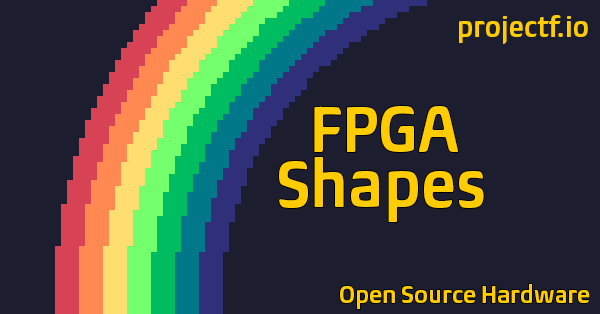Tutorials to get you started and improve your design skills. See also Recommended FPGA sites. FPGA Graphics Learn graphics at the hardware level and improve your FPGA design skills. Beginning FPGA Graphics - video signals and basic graphics Racing the Beam - simple demo effects with minimal logic FPGA Pong - recreate the classic arcade on an FPGA Display Signals - revisit display signals and meet colour palettes Hardware Sprites - fast, colourful graphics for games Framebuffers - bitmap graph...| Project F
Welcome back to Exploring FPGA Graphics. In 2D Shapes, we build on what we learned from Lines and Triangles in two ways: drawing new shapes and learning to colour them in. We’ll start with rectangles and filled triangles before moving on to circles. These basic shapes make it possible to create a wide variety of graphics and user interfaces.| Project F
Welcome back to Exploring FPGA Graphics. In the previous part, we worked with sprites, but another approach is needed as graphics become more complex. Instead of drawing directly to the screen, we draw to a bitmap, which is read out to the screen. This post provides an introduction to framebuffers and how to scale them up. We’ll also learn how to fizzlefade graphics Wolfenstein 3D style.| Project F


